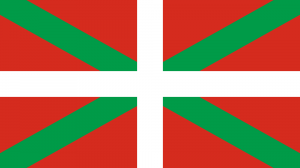Language/Basque/Grammar/Noun-Gender-and-Number
Introduction
In this lesson, we will dive into the fascinating world of Basque noun gender and number. It is essential to understand these concepts to form correct sentences and convey the intended meaning accurately. Basque nouns can be masculine or feminine, and their singular and plural forms differ significantly. But don't worry, we'll explain everything in detail and provide examples using common Basque words.
Noun Gender
Basque nouns have two genders: masculine and feminine. The gender of a noun is not always indicated by its meaning, so it must be memorized for each word.
Here are a few basic rules to help you determine the gender of a noun in Basque:
- Words ending in -a are usually feminine. Example: etxea (house)
- Words ending in -e are usually masculine. Example: gizona (man)
- Words ending in -o can be either masculine or feminine. Example: ardoa (wine)
- Words ending in -i are usually feminine. Example: ahizpa (sister)
Remember that these are just general rules and that some words may not follow them. It's best to memorize the gender of a word together with its meaning.
Using Articles with Gendered Nouns
In Basque, articles must match the gender of the noun they are modifying. Here is a table that shows how articles change based on the gender of the noun:
| Gender | Definite Article | Indefinite Article |
|---|---|---|
| Masculine | -a | bat |
| Feminine | -a | bat |
As you can see, the definite article is -a for both masculine and feminine nouns. The indefinite article for both is bat.
Here are some examples of articles used with gendered nouns:
- Etxea da hortik hurbil. (The house is close by.)
- Gizona etxean dago. (The man is at home.)
- Ardo bat nahi dut. (I want a wine.)
- Ahizpa bizi da Amerikan. (The sister lives in America.)
Note how the articles change based on the gender of the noun.
Noun Number
Like many languages, Basque has singular and plural forms for nouns. In general, words that end in a vowel add -k to become plural, and those ending in a consonant add -ak.
Here are some basic rules to help you form plural nouns in Basque:
- Words ending in -a in singular change to -ak in plural. Example: etxea (house) → etxeak (houses)
- Words ending in -ak in singular stay the same in plural. Example: autoa (car) → autoak (cars)
- Words ending in a consonant add -ak in plural. Example: txakurra (dog) → txakurrak (dogs)
- Some words have irregular plural forms. Example: haurrek (children), herriak (villages)
Using Articles with Plural Nouns
As with gendered nouns, articles must match the number of the noun they are modifying. Here is a table that shows how articles change based on the number of the noun:
| Number | Definite Article | Indefinite Article |
|---|---|---|
| Singular | -a | bat |
| Plural | -ak | bat |
Here are some examples of articles used with plural nouns:
- Etxeak daude hortik hurbil. (The houses are close by.)
- Autoak etxean daude. (The cars are at home.)
- Txakurrak bizi dira Amerikan. (The dogs live in America.)
- Herriak nahiko ugari daude Euskal Herrian. (There are plenty of villages in the Basque Country.)
Notice how the articles change based on the number of the noun.
Irregular Noun Forms
As mentioned earlier, some nouns have irregular forms that don't follow the general rules. Here are a few examples:
- Bikotea (couple) → Bikoteak (couples)
- Adiskide (friend) → Adiskideak (friends)
- Ama (mother) → Amaiak (mothers)
- Ardi (sheep) → Ardiek (sheep)
It's best to memorize these irregular forms together with their singular counterparts.
Conclusion
In this lesson, we learned about Basque noun gender and number. We covered the basic rules for determining the gender of a noun and forming plural forms. We also looked at how articles must match both the gender and number of a noun. It's essential to understand these concepts to form correct sentences in Basque. We hope this lesson has helped you gain a better understanding of Basque grammar. Happy learning!

